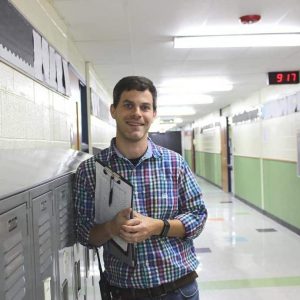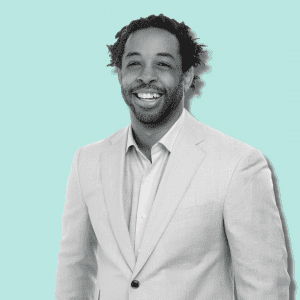
School Districts and the Road to Equity
01/23/2020

How Districts Can Overcome Opportunity Gaps Once and For All
The screen read: “a2 + b2 = c2”
Twenty seventh-grade students, seated in rows in this Tulsa classroom, were silently working from an old textbook. Their teacher, illuminated by an overhead projector, looked on. For about thirty minutes, I heard only the soft scratching of pencils across loose-leaf paper. Students used the Pythagorean Theorem, squaring numbers and adding them, to find the hypotenuse of a right triangle. It was a rote math lesson that many of us have seen before. But, from what we know about how students learn math, it was not likely to deepen everyone’s understanding.
Next door, another teacher was covering the same learning objective, but the class was wildly different. These students were grappling with the meaning of a key grade-level standard by constructing different right triangles. They weren’t there only to find answers or to use an algorithm; this teacher wanted her students to use models, talk with each other to problem-solve and construct proofs to think deeply about why the math works. Students need both. And they rose to the challenge. The room buzzed with electricity and joy. You could see wheels turning as students shared ideas and debated each other’s thinking.
Which math classroom would you want your child to be in?
How did two classrooms that were right next door to each other in the same school end up with such different lessons?
It’s an under-explored finding that variations in teaching within schools are far greater than the variations across schools. In one school, there are classrooms that are engaging, challenging, and supporting the learning and joy of every student. And there are classrooms that aren’t. Parents intuitively understand this when they fight to move their child into the classroom of that special teacher. Many parents see the quality of their child’s experience varies each year, widely. And yet, this within-school variance is infrequently discussed. We must acknowledge that this variability in access is not random. In fact, it consistently leads to inequitable outcomes for students of color.
Teachers go into the classroom with passion and strong core values. However, teacher preparation does not give most the deep content knowledge they need to thrive. Thus, they feel immense pressure to reach all of their students while continuing their own learning. This is compounded by unaddressed bias and low expectations, high teacher turnover, and wide disparity in access to resources like a strong curriculum and stable leadership. You start to understand why students of color and low-income students consistently experience gaps in opportunity. Recent data from TNTP shows that students spend about six months of wasted instructional time per year on assignments that are inappropriate for their grade level. Four out of 10 classrooms with a majority of students of color never receive a single grade-level assignment.
“If we want all of our students to reach the high goals they set for themselves, we have to empower their teachers to succeed.”
Now, three years after my visit to Tulsa, we don’t have to imagine how learning for students would look if teachers had strong support. It’s already happening. Leaders at Tulsa Public Schools have acted with boldness to align time and money, a strong curriculum, and robust professional learning to the content teachers need to teach. Early indicators suggest that it’s working. “Meeting our ambitious goals for students will require outstanding learning for our educators that is grounded in content and curricula, happening day-to-day and week-to-week in schools, and led by and for teachers,” shared Danielle Neves, the Executive Director of Teaching and Learning for TPS.
Teachers in 19 Tulsa schools now experience 90 minutes of shared, teacher-led planning and practice with peers every week about the content they’re teaching next. Leading Educators is working with TPS to design learning sessions for teachers that break down priority topics within the context of their curriculum. That gives teachers certainty that their precious learning time is well spent. Alongside this content focus, educators across all levels of the district are having hard and necessary conversations about intentionally working toward equity in education. Before lessons make it to students, teachers work with others to anticipate challenges and necessary differentiations, make adjustments, and ensure their instructional strategies are culturally relevant. Instructional culture is thriving. Teachers are better equipped to serve a student population that is becoming more diverse in every way. I believe this change can and should take root everywhere.
We can do better.
Our country spends $18 Billion a year on professional learning for teachers, but few programs show evidence that they are working. Learning standards have become more challenging. Often, meeting them places demands on teaching that traditional professional development struggles to address. In our work, we have looked to distributed leadership to empower teachers to drive change in their buildings alongside system leaders and principals. No one should feel they have to go it alone or have all of the answers. When we move professional learning out of big auditoriums and build up teachers with relevant professional learning and leadership, we ignite transformational learning for students.
We live in the best-resourced country in the world, and I believe we are capable of providing a world-class education to every student every day. As you think about the shifts you could influence to support equity in education, consider the following:
-
How are you working to reduce within-school inequity and ensure that every child has access to excellent teaching?
-
How might you support teachers with sustained and meaningful development that empowers them to create challenging and engaging learning confidently?
We know teachers have an unmatched influence on a student’s life, so getting support for teachers right matters a lot to me. At the end of the day, the knowledge and experiences our young people carry with them as they cross the stage to receive their diploma will depend on who was at the front of their classrooms. Let’s do everything we can to lift them up.
Note: This piece originally ran in the the January/February 2020 issue of Accessibility, Compliance, & Equity.







